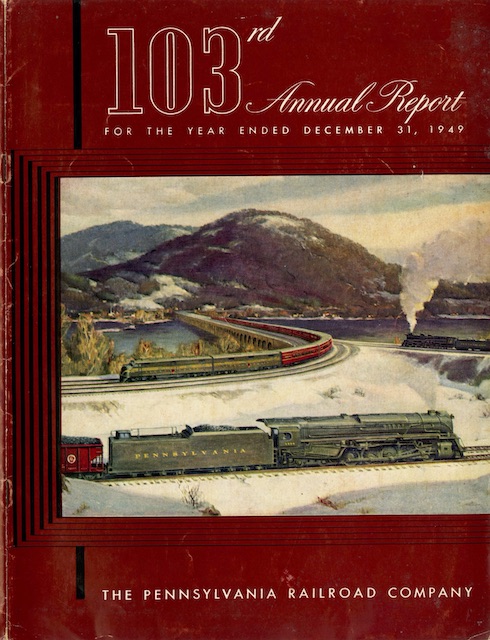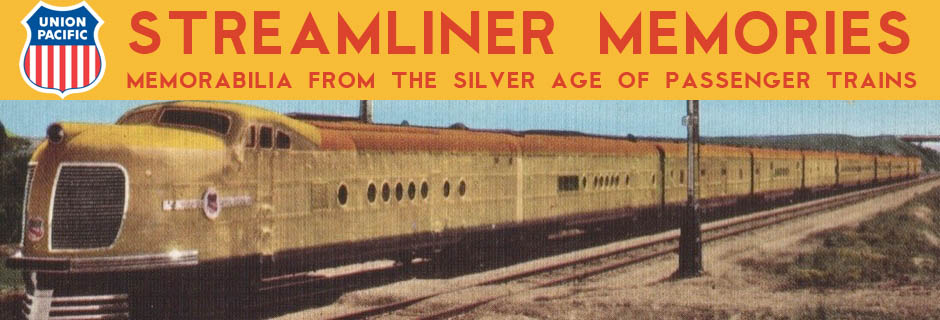Steelworkers went on strike in 1949, and PRR blamed this for the decline in net revenues from $34.4 million in 1948 to $12.5 million in 1949. The railroad reduced its passenger service by another 10 percent, but noted that increased fares counterbalanced the decline in ridership.
 Click image to download a 12.7-MB PDF of this annual report.
Click image to download a 12.7-MB PDF of this annual report.
The scene on the cover of this report, “Crossroads of Commerce,” is one of Grif Teller’s most famous paintings. Illustrating a scene near Harrisburg, Pennsylvania, it was also used on the 1950 calendar. This is the winter version of the painting; PRR used the summer version on its August, 1950, timetable.
These annual reports provide some interesting snapshots of the railroad industry after the end of World War II. Pennsylvania was the largest and most profitable railroad in the U.S. at the time, yet it struggled under the weight of government regulation. Some of its passenger trains still made money, but many did not.
In less than two decades, Pennsylvania would disappear into a merger with New York Central that would then go bankrupt, leading Congress to have the federal government takeover most of the nation’s passenger train. A decade later, Congress would deregulate the railroads leading to a huge surge in traffic and profitability. One can only wonder if deregulation had taken place before 1950 whether the Pennsylvania or private passenger trains could have survived.
